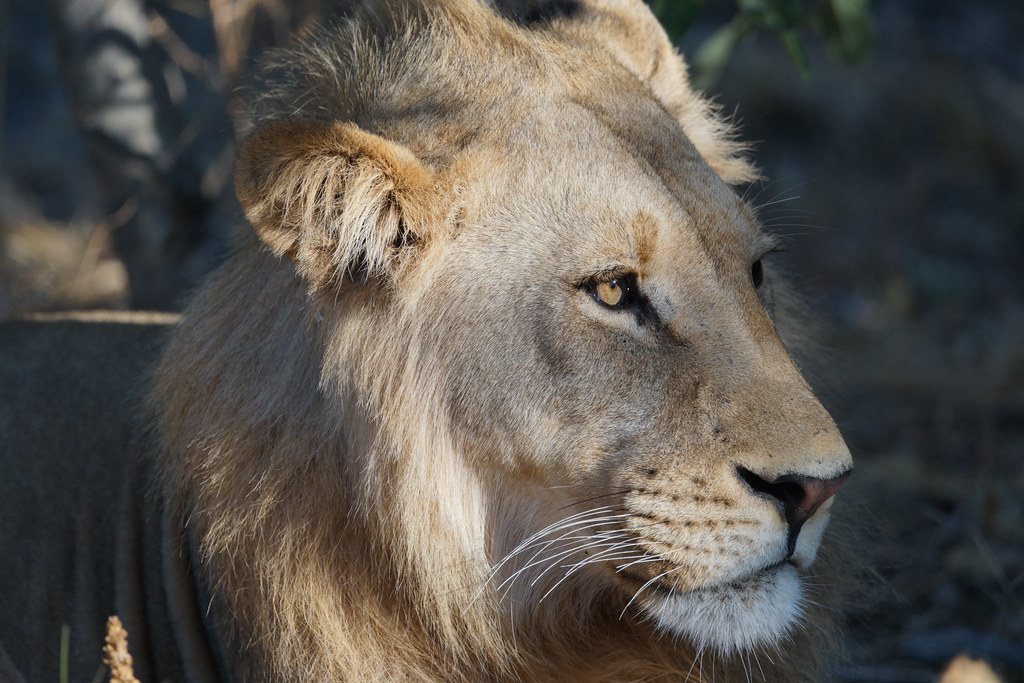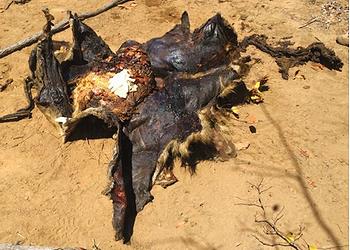老虎數量減少,盜獵者如今瞄準獅骨,聲稱與虎骨同樣具有壯陽效果。非洲林波波國家公園最近就發生野生動物大規模中毒死亡事件,包含兩頭獅子在內,近百隻動物身中南非地方傳統毒藥死亡,屍體附近發現設置有陷阱。兩隻遇害的獅子年約兩歲,屍體已經遭肢解,獅骨被取出,所有的骨頭都被帶走,還有22隻禿鷲頭被砍下。專家表示,追究其原因,恐怕和亞洲市場對獅骨需求熱度不減有關。
林波波跨國掠食者計畫(Limpopo Transfrontier Predator Project)的研究團隊在距離Machampane旅遊營地2公里處目擊兩頭安氏林羚、一頭疣豬和一頭黑斑羚的屍體,身上綁著南非地方傳統毒藥。
一旁則有兩頭獅子、51隻禿鷲、三隻魚鷹、一隻黃嘴鳶和一隻乳黃鵰鴞的屍體。此外有豹出沒的痕跡但是沒有找到屍體。
被毒死的屍體附近設置著陷阱。獅子的屍體則已經遭到肢解,獅骨被取出,22隻禿鷲頭被砍下,可能被拿去製作南非傳統藥材「muti」。
獅骨一般會被用於製作無實際療效的壯陽藥和傳統藥材。由於老虎數量減少,亞洲市場獅骨需求提高以取代虎骨。
研究團隊發現這兩頭獅子被運到中毒屍體200公尺外的山脊處屠宰,只留下皮、部分脂肪較多的腹部和腸子。
兩隻獅子年約兩歲,所有的骨頭都被帶走,肉則被切片曬乾、取走了大部分。
研究團隊燒掉了現場所有殘存的中毒屍體。
這已經是這個地區第二起以獅子為目標的中毒事件。第一次發生在2014年7月,共三頭成年獅子、七隻白背禿鷲和一隻短尾雕受害。
研究團隊指出,「這是公園內首次以獅骨為目標的下毒事件。由於過去五年間園內犀牛和大象盜獵事件層出不窮,我們擔心林波波國家公園後續可能發生大規模的下毒取獅骨事件。」
今年稍早,非洲九國在華盛頓公約會議上提案將獅子列入公約附錄一,給予最高等級的國際貿易管制保護。但是最後提案並未通過,獅子目前仍然在附錄二,可在監管之下貿易身體部位與製品。不過,附錄二野生物種骨頭、製品、爪、骨架、頭骨和牙齒的商業貿易年度配額為零。
但出乎保育人士意料的是,華盛頓公約會議代表允許銷售圈養獅骨,前提是南非政府提出年度圈養獅骨出口配額。
生而自由基金會(Born Free Foundation)主席崔維茲(Will Travers)相當不認同這個決定,認為這會使圈養獅骨貿易永難禁絕。保育人士認為,圈養和野生獅骨難以區分,等於開了野生動物盜獵的後門。
The ongoing Asian demand for lion bones has led to a wildlife poisoning in the Limpopo National Park, just over the Mozambican border from South Africa’s Kruger National Park.
A mere two kilometers from the Machampane tourist camp, a research team from the Limpopo Transfrontier Predator Project came across the carcasses of two nyala, a warthog and an impala laced with what they describe as a black granular poison.
Lying nearby were the bodies of two lions, 51 vultures, three fish eagles, a yellow-billed kite and a giant eagle owl. There was evidence of a leopard but its body was not found.
Snares had been set around the poisoned carcasses.
The lions had been dismembered, their bones removed, and 22 vultures had been decapitated, their heads presumably to be used for muti. Derived from the Zulu word for tree, muti is a term for traditional medicine across much of southern Africa.
Lions are killed so their bones can be used to make fake aphrodisiacs and traditional medicines. The demand for lion bones is growing in Asia as tigers become scarce.
The research team found the two lions had been carried 200 metres away from the epicenter of the poisoning onto a nearby ridge and butchered. The skins, a portion of the abdomens with significant layer of fat and the intestines were left.
The two male lions were both estimated to be about two years old. All their bones had been removed and meat had been cut into strips, dried and mostly removed.
The Limpopo Transfrontier Predator Project team burned all the poisoned carcasses that remained at the scene.
This is the second poisoning event that has targeted the lion pride in this same area. The first one, in July 2014, killed three adult lions, seven white-backed vultures and a bateleur eagle.
According to the team that discovered the carcasses, “This poisoning is the first time that we have found evidence of lions being targeted for their bones in the park. Considering the prevalence of commercial rhino and elephant poaching in the region over the past five years we are concerned that this event could mark the beginning of large-scale poaching of lions for their bones in the Limpopo National Park.”
Earlier this month, at the Conference of the Parties to the Convention on International Trade in Endangered Species, CITES, nine African nations – Niger, Chad, Côte d’Ivoire, Gabon, Guinea, Mali, Mauritania, Nigeria and Togo – sought to uplist lions to Appendix I, which offers full protection from international trade.
But delegates did not back their attempt at greater protection, and wild lions remain on Appendix II, which allows regulated trade in listed species and their parts.
The Appendix II listing specifies a “zero annual export quota for bones, bone pieces, products, claws, skeletons, skulls and teeth removed from the wild and traded for commercial purposes.”
But, in a compromise move that shocked many conservationists, the CITES delegates allowed the marketing of captive lion bones.
Captive lion breeders escaped the ban, with South Africa only required to submit an annual quota for bone exports from captive breeding facilities.
Will Travers, president of the nonprofit Born Free Foundation, called it an appalling decision that would perpetuate the captive-breeding bone trade.
Conservationists point out that it is impossible to distinguish the bones of captive-bred lions from those of wild lions, leaving the door wide open for laundering of poached animal parts.
※ 全文及圖片詳見:ENS






